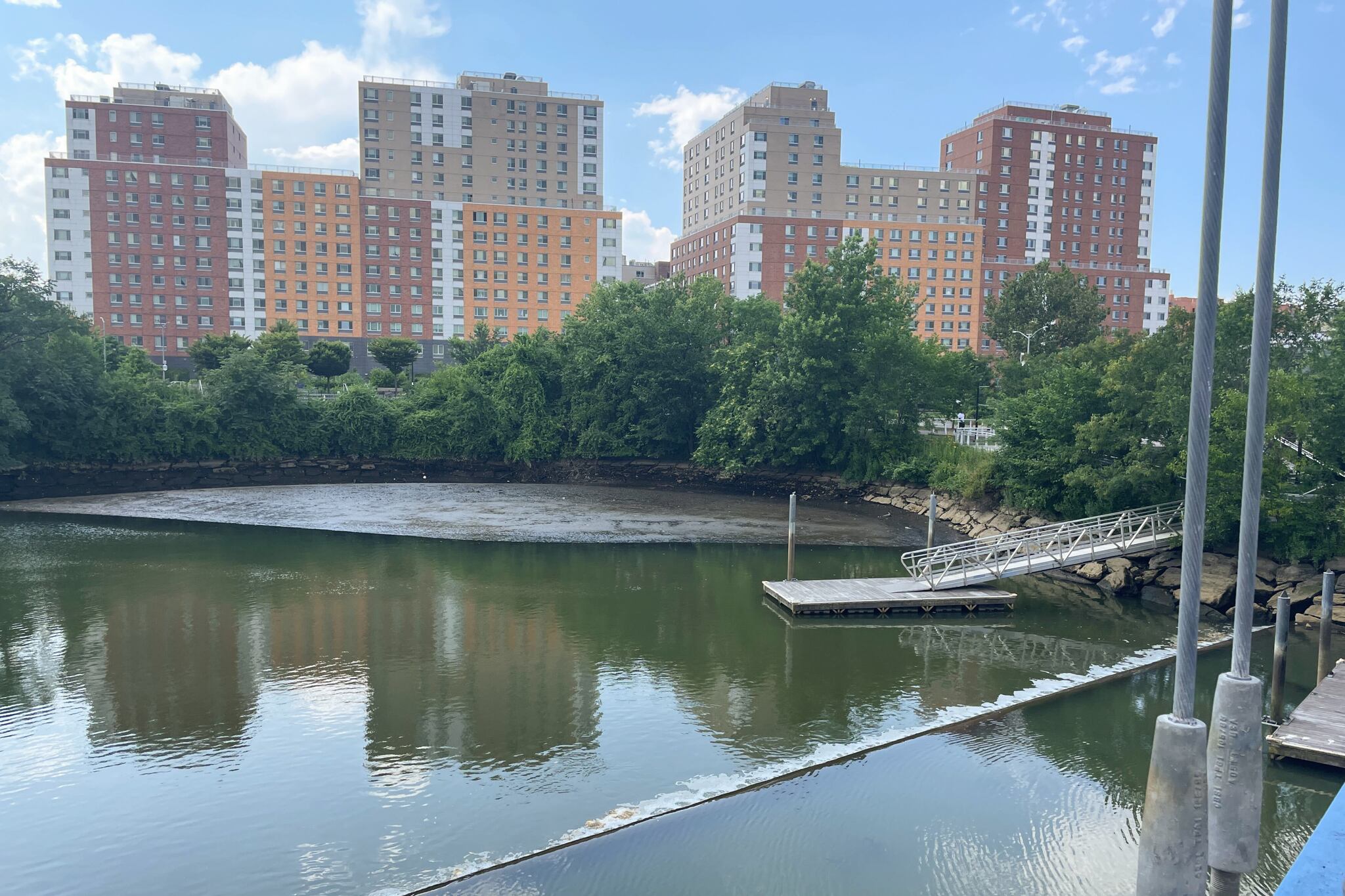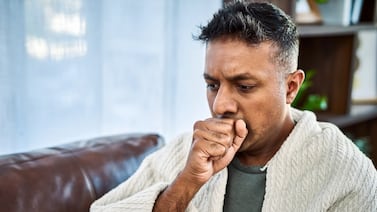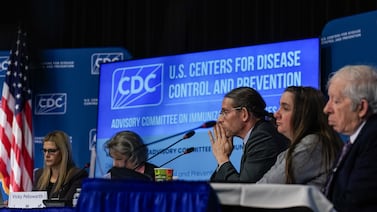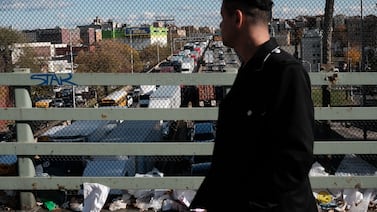This story was originally published by THE CITY. Sign up to get the latest New York City news delivered to you each morning. Public health, explained: Sign up to receive Healthbeat’s free New York City newsletter here.
Blue herons and eastern coyotes are just some of the animals Mark Surabian, a Bronx River kayaker for the past seven years, has seen while paddling down the waterway.
They’re a sight for sore eyes considering the river used to be an industrial waste dumping ground in the 1800s, particularly on its southern portion.
For people like Surabian, the Bronx River is a treasure of the city and one of its defining waterways. But there’s one main issue that spoils the fun: combined sewer overflows, or CSOs.
That’s the technical term for the approximately 454 million gallons of rainwater runoff, domestic sewage, and industrial wastewater that discharges into the river every year from just three out of the five outfall points along its southernmost part.
Because of the city’s aging infrastructure, even just small amounts of rain can overwhelm the sewer system, triggering a flood of filth into local waterways, the Bronx River among them. Those overflows carry fecal matter with contaminants and pathogens that cause gastrointestinal issues, rashes, and eye infections, among other serious ailments. They can also cause algal blooms and deplete oxygen levels, which can kill fish and other creatures living in the water.
“On a good day, when it’s not murky, you see the sandy bottom and the fish swimming by. It’s as pretty as any other little river,” said Surabian, 63, who also volunteers for the Bronx River Alliance, a nonprofit group. “When the CSOs happen, that’s the dilemma. It’s sad.”
On the river’s best days, the state Department of Environmental Conservation still only suggests activities that don’t include swimming in the water, like kayaking or fishing on the southern portion of the river below East Tremont Avenue.
When even a moderate amount of rain falls, however, Riverkeepers, an advocacy group dedicated to the restoration of New York’s waterways, recommends waiting at least 36 hours before doing anything in the Bronx River. With heavier showers, the time needed to flush the contaminants out can stretch to 72 hours.
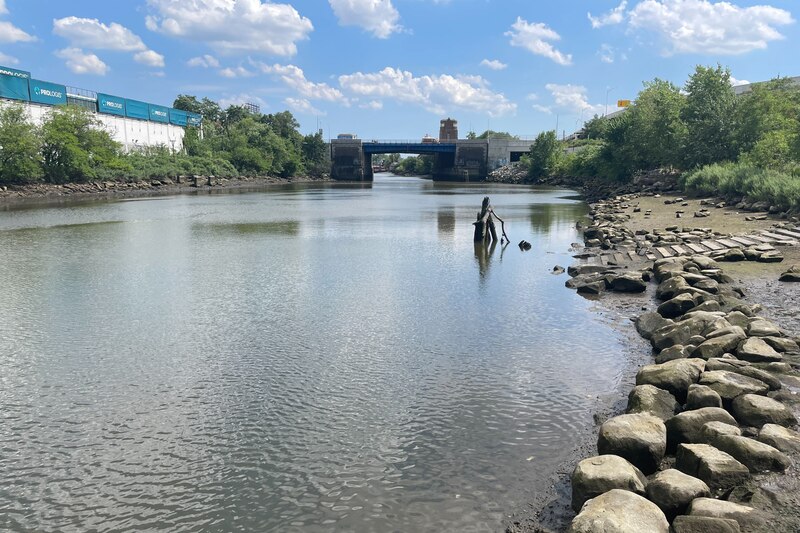
THE CITY visited the southern portion of the Bronx River during a recent water advisory period and also saw cloudy waters that did not look inviting. But the fear of brown sludge hasn’t altogether stopped people from swimming in it, as seen in a viral video from last month.
Some other Bronxites are leery of the river’s cleanliness.
“It has a lot of pollution and fecal matter inside, so it’s not something that you would want to go in,” says Alexandra Maruri, a nearly lifelong Bronx resident in her 50s who lives across the street from the river. “I wouldn’t recommend it for swimming.”
Advocates for the river are pushing for the state DEC and its local counterpart, the city Department of Environmental Protection, to do more to protect the river from CSOs and eliminate the chance of people coming into contact with raw sewage.
“It interferes often with our recreational programming where we try to get folks in canoes and kayaks,” said Christian Murphy, the ecology and education manager at the Bronx River Alliance. “We have to cancel those things when the CSOs are active or shortly after they’ve been active, based on the EPA’s guidelines.”
Surabian, who helps with kayaking events hosted by the Alliance, said the last two he attended were disrupted by sewage overflow and had to be cut short.
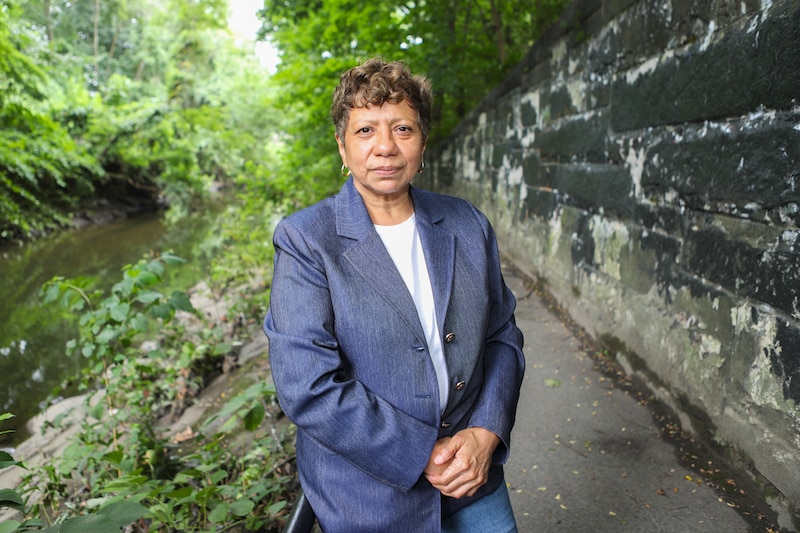
Standards for Harlem River evaluated
Fans of the Bronx River are keeping an eye on a water fight to the south, as the Harlem River is in the midst of a reevaluation of its cleanliness standards.
A planned reclassification would change the Harlem River’s rating to “SB-WW,” meaning that it would be considered “swimmable” during dry periods with a key caveat during “wet weather,” meaning during and immediately after rainfalls, which is when raw sewage seeps into the river.
Opponents of the move argue that the reclassification discourages further efforts to clean up the river. It would still not fully meet the standards necessary to allow for swimming in the river regardless of the weather and does not meet the “swimmable” goals laid out in the federal Clean Water Act, according to a scientific assessment from DEC.
Those goals include eliminating the discharge of pollutants into the waters — not just accepting them during rainy periods — and providing for recreation in and on the water.
The water quality of the Harlem River already meets the standard DEC is trying to switch to — swimmable water with an exception during rainy weather — according to Em Ruby, advocacy and policy coordinator at Riverkeepers.
“On paper, it’s a better classification, but in reality, they’re not proposing to make any further improvements to water quality,” said Ruby. “That’s why we’re arguing to set the classification of the waterway at a standard it’s not currently meeting, so the city for the next 50 years can work toward actually being swimmable 100% of the time.”
Harbor water quality data maintained by DEP shows that each single-day sample taken from the Harlem River during dry weather in 2024 came in under the single-day threshold for levels of bacteria called enterococchi, which are used as a barometer for water quality, and came in at or above the threshold on half of the samples during wet weather. The dataset takes measurements from the middle of the river, below a CSO outfall.
However data from the Community Water Quality Testing Program conducted by the Billion Oyster Project — taken from the bottom-most portion of the Harlem River in 2024 — showed numbers exceeding the SB-WW enterococci safety threshold over all of the 30-day periods provided.
As part of the reclassification study, the DEC estimated they would have to spend an additional $9.3 billion at minimum over the next 25 years to build a deep storage tunnel and other CSO-based infrastructure to help get to a fully swimmable Harlem River even during wet weather. This would cut into other environmental projects, according to the department, and is the main reason why they aren’t investing in more CSO control beyond current commitments for water quality.
“While these efforts do not instantly permit swimming or fishing in all waters, they establish the strongest protections to date, allowing DEC to further reduce pollutant inputs and safeguard the progress already made,” said DEC spokesperson Denis Slattery. “These upgrades ensure that future generations inherit cleaner, safer waterways.”
Advocates are worried the same reasoning will be used to accept the less ambitious standards for the Bronx River and other city waterways, even though expensive storage tanks and pump stations aren’t the only option to tackle the CSO issue.
“We feel like that’s kind of a cop-out to stop fighting for clean water forever and to just be like, ‘Okay, that’s good enough.’ That’s certainly not what we want to happen to any other water body,” said Murphy.
Minimizing the volume of rainwater from getting into the sewers by diverting it to the water table instead can also play a pivotal role in keeping city waterways sewage-free, experts note.
Currently, the city has more than 16,000 green infrastructure assets (anything that uses soil systems, permeable surfaces, or landscaping to reduce flows to sewers or natural bodies of water), including 7,000 rain gardens, as well as 250 parks, playgrounds, and New York City Housing Authority properties that have been retrofitted to handle stormwater better, according to the Deputy Commissioner of Sustainability at the New York Department of Environmental Protection Angela Licata during a testimony at a City Council hearing in May.

